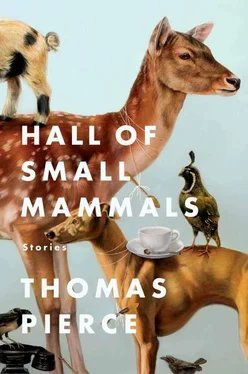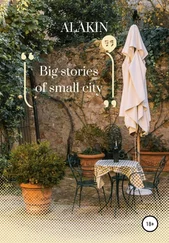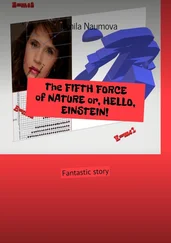These events transpired many decades ago, before we had a name for many of the fossilized creatures that once populated our planet, before we even had a name for their particular field of study; in the days before we’d completely mapped the wilds between East and West; before Mr. Morse sent his first electrical message whipping across two miles of wire; when a young Mr. Darwin was still filching finches for his sketches in the belly of HMS Beagle . The world was on the verge of a great transformation, to be sure, a scientific awakening, and we were the agents of that coming and necessary change.
Before his journey south, Anders professed to share this belief. He was an ambitious and adventurous man. In the years before he received his formal medical training, he had worked as a ship’s surgeon aboard a vessel called the Holy Wonder . During one of its southern voyages, the Holy Wonder had been inundated by a powerful storm, and Anders had slipped on deck and broken his leg. Despite a months-long convalescence in a Buenos Aires hotel, the injury had not properly healed and was, all these years later, still easily inflamed. It was for this reason that his ride to Golly on the bumping and bouncing mule cart was such an unfortunate development. When he finally reached the town late that night, he could hardly walk at all. Two men had to carry him into the boardinghouse, where a special room was prepared for him on the first floor so that he could avoid the unnecessary punishment of the stairs.
Anders’s recovery required two full days of bed rest, and it was during this time that a delegation working for Dabney Dubose slipped into town and purchased the bones for the showman’s infamous traveling museum.
This was not the first time that our efforts had been thwarted by someone as nefarious as Dabney Dubose. All varieties of huckster, scoundrel, thief, and hype-man had been busy snatching up every new fossil find. Some of the bones were shipped to Europe for exhibits in London and Paris. Others were fashioned into parlor furniture and sold for small fortunes.
Mr. Dubose called his personal bone collection Monsters from a Darker Age , and it constituted one of the chief attractions in the Dubose Brothers Traveling Museum, a caravan of oddities and curiosities that rattled from town to town on creaking wooden wheels, charging poor dupes at every stop for the chance to see its Gander of Six-Headed Geese, Rumpkin the All-Seeing Seer, the Infinity Box, the World’s Smallest Preacher, etc., etc., etc. To claim his newest acquisition, his entire caravan now turned south for the town of Golly.
Workers had discovered the bones by accident while blasting for a new well on a farm on the western edge of town. For their protection, the bones had then been transported to a nearby barn and nested in bales of hay. Dr. Anders, unaware that he’d already failed in his mission, visited the farm on his third morning in Golly to make the acquaintance of the property owner, a knobby man with two buttons missing from his work shirt.
“You’ve come too late,” the man said.
Anders was shocked. That the sale had occurred only the previous afternoon, as he lay in bed recuperating, only worsened the blow. He had traveled so far and, it seemed now, for nothing. If he returned home empty-handed, what would we say? What would we think of him?
“Can I at least see them?” Anders asked. “Would you mind if I catalogued and sketched them?”
The farmer scratched at his bristled chin with a jagged dirty fingernail, perhaps looking for a reason to say no. They were standing in front of the man’s miserable one-room house. A strange animal skull hung on a nail above the open door. “You want to draw them, is all?”
“If you don’t mind, yes. I’ll stay out of your way. I assure you.”
The man shifted from right foot to left. “All right, then,” he said at last. “But if you try and run off with—”
“I wouldn’t dream of it,” Anders said.
He followed the farmer across a long frosted field that stretched behind the house. His leg still aching — a sharp stabbing pain that radiated from hip to toes — Anders hobbled along on an ivory-handled walking stick obtained for him the previous evening by the town doctor. The cane left a trail of small divots in the hard soil. When they reached the barn, the farmer threw open its tremendous doors, and dusty sunlight spilled across the compacted straw floor. Both men’s shadows stretched long and distinct ahead of them. Anders coughed, a handkerchief over his nose and mouth. The farmer motioned at the hay bales and said that so long as the bones didn’t leave the barn, there wouldn’t be any trouble. He gave Anders a final appraising look before spitting in the straw and leaving.
From his bag Anders removed his pen, ink, journals, caliper, and measuring rods. He was thrilled to find, among the bones across the bales, dorsal and caudal vertebrae, a partial pubis, distal ends of the right radius, the left femur, and the proximal end of the left tibia, ribs, and, best of all, the entire lower jaw. The farmer and his friends had done an adequate job of chiseling away the rock, though some pieces were still embedded. This was no mammoth or mastodon, of that Anders was quite certain. (Our museum already had in its possession a nearly intact mammoth skeleton.) It was not an ancient horse or deer or sloth or cat either. It was much larger, and very likely reptilian. He catalogued the bones in his journal. A truly remarkable find. That it now belonged to Dabney Dubose, of course, was a travesty.
By no means was Anders an accomplished illustrator, but with help from the Academy he had improved upon his shading, crosshatching, and stippling techniques. He endeavored to make his drawings as scientifically accurate as possible. One day, he hoped to include the figures with the papers he aimed to publish.
Anders was engrossed in his drawing of the jawbone when he heard the squeak of wood overhead. He glanced up and saw that a wild-looking creature with long twisted hair and ruddy cheeks had climbed into the rafters. The creature — a boy, Anders decided — stared down with deep brown eyes, his toes hugging the splintery edges of the beam upon which he crouched.
Anders returned to his drawing and said, “You’re welcome to join me. No need to hide.”
The boy didn’t say anything.
“My name is Dr. Anders,” he added.
The boy thudded down into the straw, kicking up more dust. Anders stood to greet him with an outstretched hand. The child shook it uncertainly. His shirt was soiled with dirt and sweat and probably a thousand messy meals.
“You can sit with me if you’d like,” Anders said, making room. “I don’t mind.”
The child, noiselessly, fell into a cross-legged jumble at the scientist’s feet. He watched Anders’s pen dance across the page, as if the transference of the ink was a minor miracle.
“How does it look?” he asked, and the child shrugged.
“Your name?” Anders asked.
“Temp.”
“Temp,” Anders repeated. “Short for what? Temperance? Or temperature? Or temporary?”
“Tempest.” The child’s eyes darted from bone to bone. “I’m told it was my mother’s family name.”
As Anders drew, he told Temp of his own childhood, about his mother’s death in a fire, about his minister father, about their lonely years with a congregation in a town much like Golly, about his early fascination with the Creation story and, in particular, with a tantalizing verse in the Book of Job that described a behemoth with a tail like a cedar and bones like bars of iron.
Temp gazed at the jawbone, fascinated. “So it’s a monster from the Bible?”
“Well,” Anders said, “that depends on what you mean by monster . Certainly it was of a monstrous size . By my calculations, this creature stood at least ten feet tall. I believe it was bipedal. In other words, it walked like you and me. Upright. On two feet.” He stood to demonstrate, shifting his weight to his good leg. He snarled at the boy playfully and smiled. “But I don’t care for that word, monster . Calling it a monster implies that it was a wholly unnatural creature. In its time, this was no more a monster than any other animal that currently walks the earth. Including you and me, by the way.”
Читать дальше












